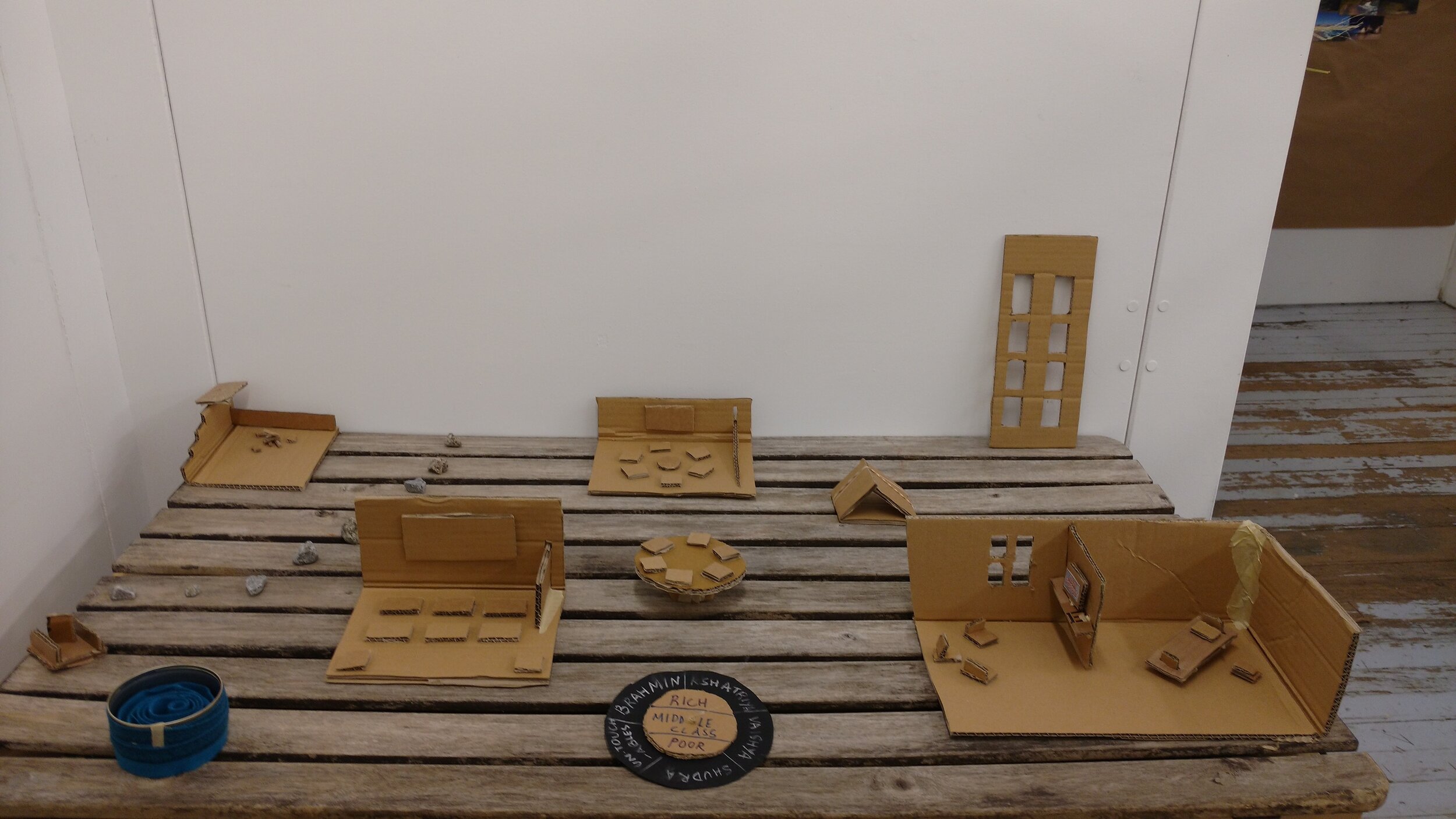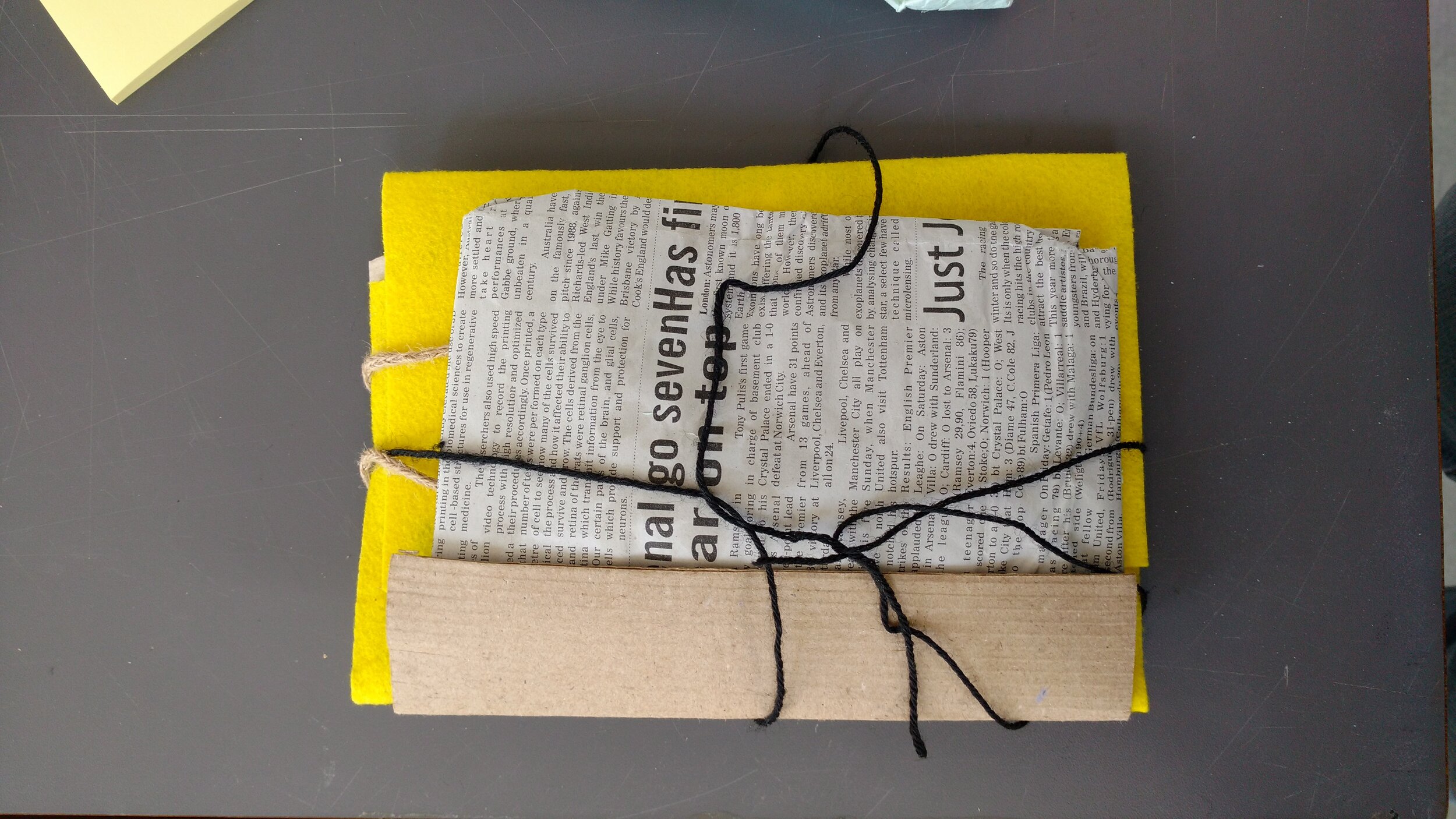
step, choose & play
A designed intervention to challenge the status quo
Master of Design, 2018
This dissertation project is the outcome of two years in the Master of Design program at Emily Carr University of Art & Design in Vancouver Canada. The course engaged our abilities to think and write critically within a creative, theoretical and experimental framework. Through generative research methodologies grounded in a strong studio culture, my work was situated at the confluence of storytelling practices, gestures and making.
This thesis project was co supervised under the expert guidance of
Deborah Shackleton & Hélène Day Fraser
Snakes, Ladders & Choice is the reimagined and redesigned game based on the traditional Indian game of Gyan Chaupar and its colonized counterpart - Snakes & Ladders. This game is a recommendation to enable necessary discourse within communities in India to challenge stereotypes, prejudices that determine the status of women. I used the technology of the Hoffmann hand tufting gun (meant to create rugs), to visually imagine the game to suit the gallery and exhibition setting.
Situated in the Michael O'Brian Exhibition Commons, my thesis project sat amongst other graduate projects for over two weeks at the Emily Carr University of Art & Design's Grad Show Exhibition in 2018.
Snakes, Ladders & Choice, displayed at Michael O'Brian Exhibition Commons, Vancouver.
Hoffman Hand Tufting Gun
Artefact in progress
A finished snake artefact
Antithetical to this are the number of crimes against women recorded by the India National Crime Record Bureau (thirty nine per hour) (NCRB, 2016). The brutal rape of Nirbhaya shocked countries world over.
It forced Indians to take notice - this had more to do with the breeding of a culture of violence than a case of a one-off incident. In this context, the objective of this dissertation and its outcomes have been to expose a few examples of where this violence towards women potentially stems from. Within a research framework grounded in design and material praxis, this thesis used a narrative based enquiry along with embodied ways of knowing to develop a series of interventions that cite historical and contemporary examples . These informed three rounds of redesign of the well known game Snakes and Ladders. User participation and testing were used to refine schemas of Chance to Choice within the game. Throughout this design process I have aimed to challenge behaviours and provide spaces to have discussions about problematic biases that subjugate women. Moving forward this work will continue to be developed. It will shift, with care and attention, to India where it will be further developed to better reflect the nuances of the context it is meant for.
studio practice
The MDes program at Emily Carr University added weightage to a studio practice. When i first moved to study, I didn’t quite understand what that meant. It took a bit of time and unlearning to move from the concept of finality in design and adopt a process mindset. What this meant was: i was spending a great deal of time thinking about the complexities of my research through making. It quickly became one of my core strengths: the ability to iterate and prototype.
I played with varied materials, mediums and used storytelling techniques to communicate- my background in theatre came in handy. This section is a documentation of the mind maps, cultural probes, creative tool kits, studio artefacts and process work which guided the journey to my Masters Thesis.
Visual Mapping
The beauty of setting a project in a country that was foreign to most of my cohort was the fascination and curiosity that came up in conversation. Sometimes, there were challenges wherein I had to clarify what I meant in order for me to receive constructive feedback.
My work referenced the Hindu Caste System a lot; ( a practice of segregation that still exists in India). I wanted to show my peers what this meant to a person who was born into a lower or outcaste as opposed to a high caste member.
Using a visual storytelling format, I cut discarded styrofoam into structures that mimic homes, a business establishment and a hospital. I used cloth and other found material as signifiers of people, a common meeting point, a boundary etc.
Putting my storytelling skills at work, I took my entire cohort through two rounds around the village, like visitors. Once as an upper Caste Brahmin, who had access to all the amenities in the village. And then as the Outcaste Dalit, who lived on the margins - at the edge of the village. The Dalit is unable to participate in village activities, unable to collect water from the well or pray in the same shrine. The upper caste Brahmin has freedom of movement and opportunity.
While this artefact was fairly linear and simplified to a large extent the brutalities of the caste system, it was an effective format to ground the conversation in a socio-cultural context.
Visual mapping of a village
Recreated in cardboard for a studio visit
Visual Journey Map
How many people do children meet on a regular school day?
At the time in my masters program, I was following a different direction - specifically in child safety and protection.
The rationale behind this exercise was to illustrate and comparatively analyze the number of potential interactions a child might have with strangers - ranging from people they meet rarely to regularly.
I had brief discussions with two mothers belonging to separate demographics. The first, a widow who lives below the poverty line with her teenage children - a boy (now deceased) and a girl. And the second a school teacher, from an upper middle class house hold with daughters, below the age of 8 years.
Visually tracking their journey’s allowed me to fill in gaps based on the knowledge of their socio economic backgrounds. To a viewer, this is a much more engaging way to parse information - especially in the context that I was in at the time.
Children living below the poverty line
Map of the children belonging to an upper middle class background
Prototyping Forms
In a series of different prototyping experiments, I took elements from various Indian folk forms of storytelling as conversation starters.
1. The Kaavad: A storytelling box that resembles a Hindu temple structure. Each door to the temple has illustrations of a larger story and is used as a prop by oral storytellers in India.
I used this format and created a 3D replica out of a carton and illustrated a popular folk tale on each door.
2. Light & Shadow: Suspended paper cut out's on card stock, played with light sources to create shadows on a white background.
Recreating the Kaavad
Light and shadow
Square Stitch
context: Can constraints elicit sharing? Does the nature of the conversation change if we are not making eye contact? Can emotional states enable conversations?
I divided the floor into four individual squares, each marked by an emotion -Fear, Anger, Sadness and Joy. In the middle of the four squares was a pile of thread, needles and cloth. Each team of two was directed to walk into a square after picking materials and use the emotion within the square to share stories/anecdotes with their partner, while stitching. I encouraged teams to try each emotion at least once in the two hour span.
objective: At this point in my research, I was trying to understand how people share information and if I could control this exchange of information by setting conditions.
observations: Through a brief auto-ethnography exercise , I concluded that if the objective was to encourage sharing of stories, it could have also been done with a choice of words and phrases; emotions like sadness and fear could result in drained participants. Fewer restrictions in terms of space, place and even materials might have resulted in different forms of stories. Additionally, there was a level of familiarity between participants and it would have been vital to see how strangers responded in a similar exercise and compared the responses.
Co Creation Session
Name the Birdy’s Parts
context: At this point in the course, I was having conversations about body ownership in relation to children. I believe this ownership has to do with knowing the parts of your body, their functions and not being made to feel shameful about them. However, a big step in this acknowledgement has to do with naming the reproductive parts of the body.
The directions given to participants was to work in pairs and put together bird forms with materials provided (wool, buttons, scissors, cloth) while thinking up of names for the visible body parts of the bird.
objective: I wanted to understand what motivates parents and caregivers to name or not to name? Where do these names come from? Are they influenced by function or is it random? Are these names in english or other languages?
observations: I conducted this workshop with the peers in my cohort who come from diverse backgrounds and speak multiple languages. After discussions with groups I noticed a few groups had borrowed from their regional languages for names. I also got feedback that in a long exercise such as this, facilitation was key in making sure discussions stayed relevant.
Part of the MDes cohort participating in the co-creation session
A bird created by a participant through the session.
Cultural Probe
During the summer of 2017, I interviewed and disseminated six cultural probes to be answered by non-profits in India; working in the space of child safety and protection from abuse. The probe had three activities:
card sorting exercise - the stack of cards featured illustrations of various stakeholders (parents, teachers, peers, school) present in the life of a child. The direction given was to arrange the cards in succession of which stakeholder was most important in providing care and safety to a child.
a post card exercise - one side of the post card had images of a type of media channel (social media, radio, street play) and a question along with each image. The blank side of the postcard encouraged the participant to answer the question.
an assembly exercise - in this visually engaging exercise, participants were given a range of attachable components made from felt and had to create permutations and combinations of assemblies on felt dolls.
An artefact from the probe.
The probe in its packaging

















